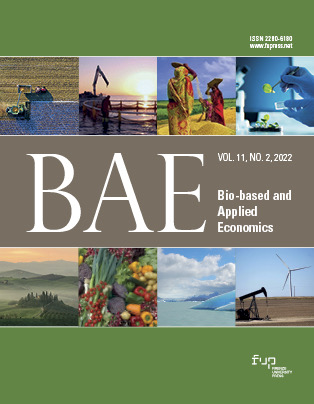Published 2022-08-30
Keywords
- on-farm diversification,
- Common Agricultural Policy,
- organic farming,
- conventional farming,
- multinomial logit model
How to Cite
Abstract
Diversification is a polymorphic strategy to increase agricultural income and reduce the risks deriving from the surrounding environment. This strategy can also be successfully adopted in the context of organic farming. However, there is a lack of confirmation in this regard given the scarcity of studies that explicitly focus on diversification in organic farms. The objective of this paper is to analyse the influence of some territorial, socio-economic, and political factors on the probability of diversifying in both organic and conventional farms. To this aim, multinomial and binary logit models are applied to the Italian case. Results suggest that on-farm diversification requires specific competences and adequate organization. However, the reasons for diversifying differ depending on the production model. In conventional farming, farmers diversify to achieve income levels comparable with those of a more competitive agriculture. Conversely, for organic farmers, diversification represents an integrated part of the production model to take advantage of synergies between organic production and diversification. From these results, some policy implications are drawn.







